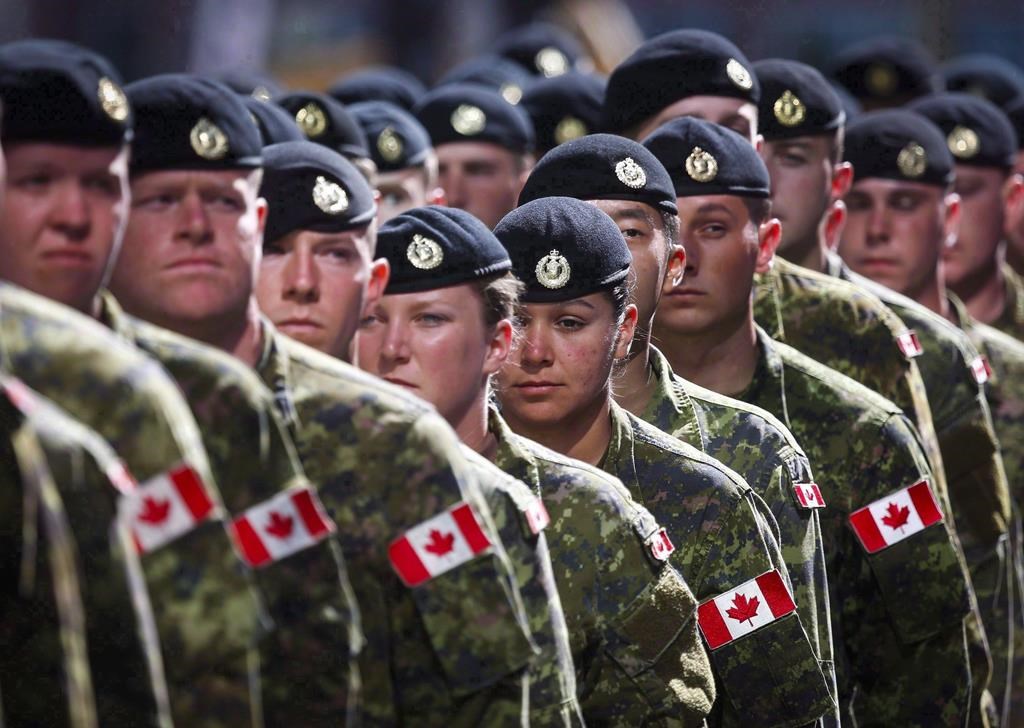Plans are being developed by Gen. Jon Vance and his Strategic Joint Staff so that, if asked by Ottawa, the Canadian Armed Forces (CAF) would be in a position to quickly render a wide range of assistance to civil authorities directing what has become a war against the lethal coronavirus pandemic.

Among the options: sending troops to help isolated northern Indigenous communities, to protect critical infrastructure in the High Arctic and elsewhere, to build field hospitals or to act as backup to police forces and Corrections Canada if police or prison guards fall ill from COVID-19.
Senior officers familiar with the intense planning and co-ordination taking place at National Defence Headquarters, Canadian Joint Operations Command in Ottawa and regional command centres stressed the military has always developed internal plans to be ready for potential crises and that the options being developed are speculative. But a few of the possible options to employ the troops were included in a directive from Vance to troops on Thursday.
No formal request for assistance has yet been received from the special federal cabinet committee responsible for dealing with the pandemic, which is led by Deputy Prime Minister Chrystia Freeland, or the lead ministry, Public Safety Canada, they said.
But requests of some sort are anticipated. Tasks might include providing hazmat suits and other medical equipment such as masks, respirators, ventilators and generators as well as tents.
A major factor being discussed is how to co-ordinate and triage requests as they are filtered through cabinet and Public Safety Canada down to not only the Department of National Defence but other ministries, the officers said. Such clarity was essential because it would assist what they described as “a truly whole-of-government” response to the pandemic.
While preparing to answer any government requests for help countering the new coronavirus, the officers emphasized that the Forces had to maintain core military capabilities and keep its 68,000 troops as healthy as possible so that they would be ready to deploy if called upon.
Essential core functions include having fighter jets ready to scramble to intercept Russian bombers and reconnaissance aircraft on Canada’s eastern, western and northern margins, as the Royal Canadian Air Force did again only last week; having search and rescue aircraft on standby across the country; sustaining important international missions in Latvia, Ukraine and Iraq; and continuing to counteract online disinformation campaigns by foreign governments and non-government actors.
- Canadian man dies during Texas Ironman event. His widow wants answers as to why
- On the ‘frontline’: Toronto-area residents hiring security firms to fight auto theft
- Honda’s $15B Ontario EV plant marks ‘historic day,’ Trudeau says
- Canadians more likely to eat food past best-before date. What are the risks?
The Forces must also have troops set aside to deal with non-coronavirus-related domestic emergencies such as forest fires and flooding around, for example, Lake Ontario, which has particularly high waters this spring.
The Canadian-led training mission in Iraq announced late Friday from Baghdad that it is repositioning troops from smaller to larger bases during the coronavirus pandemic. Because of the risk of infection to the training task force and Iraqis, all training with Iraqi Security Forces has been suspended. An as-yet-undetermined number of troops involved in training would be returning to their home countries from Iraq in the coming weeks, the Combined Joint Task Force announcement said.
The question of how the federal government intends to use the CAF to assist Ottawa with what has become a global health emergency arises because of questions from the Opposition about how the CAF will be involved. This follows plans announced by Italy, the U.S. and Great Britain to use troops to assist civil authorities in the battle to control the pandemic.
Italy has drafted tens of thousands of soldiers to provide a variety of critical functions for a medical community that has been under siege from the virus, with thousands of dead already. Because of overcrowding in cemeteries in northern Italy, the army began on Thursday to use convoys of military trucks to move the bodies of hundreds of COVID-19 victims to burial plots in neighbouring provinces.

The Pentagon has put hundreds of military medical workers on alert, and the U.S. Navy has activated two hospital ships. One, the USNS Comfort, with 1,000 beds and a dozen operating rooms, is to sail to New York, which has the highest number of COVID-19 cases in the U.S. The San Diego-based USNS Mercy, with similar hospital facilities, is on alert to move though a destination on the West Coast has yet to be decided upon.
State governors have already called upon National Guard units for a variety of tasks, including sealing off communities that have high infection rates. There is also growing pressure, particularly from New York Gov. Andrew Cuomo, for the U.S. Army Corps of Engineers to build new, temporary medical facilities or repurpose other buildings as temporary wards.
The new coronavirus has had an effect on current U.S. military operations. Exercises in Alaska and Europe have been cancelled or cut short. About 50 American troops have tested positive for the virus. One of them is a sailor aboard the USS Boxer. This has resulted in the massive amphibious landing ship and its 1,000-member crew being placed under quarantine while at sea.
British forces set up a COVID-19 response task force on Thursday. U.K. Prime Minister Boris Johnson has put 20,000 troops on alert to provide support to civil authorities, while another 10,000 have been moved to a high state of readiness. The forces there have also embedded planning experts from the army, navy and air force with government ministries.

Some of the regular force troops and reserves on alert will drive oxygen tankers. Others will help police and emergency services, but according to multiple British media reports, there are no plans to use them to directly help police maintain public order in London, which is the epicentre of Britain’s rapidly growing infection rate.
The Disaster Assistance Response Team (DART) which has a field hospital, has been discussed. But it is expensive to move and is geared towards helping with events such as earthquakes and tsunamis so DART may not be the first choice.
Despite the U.S. move to involve hospital ships in assisting civil authorities, there are apparently no plans yet to involve the MV Asterix in virus relief efforts. The Royal Canadian Navy (RCN) logistics ship has been tied up in Halifax for five months, but it is ready to sail at short notice and has medical facilities.
Asterix has a new, fully equipped surgery unit, a small intensive care unit, a pharmacy and a hospital ward capable of handling 100 patients. If required, it could care for several hundred more patients in its gymnasium, cargo areas and helicopter hangers.
The vessel has a dental suite as well as X-ray and other diagnostic equipment, including respirators. It can accommodate as many as 100 medical staff and has a kitchen capable of feeding hundreds of people a day.
Although not well suited to assist in caring for COVID-19 patients, Asterix could help hospitals by taking some of their other patients, freeing those hospitals to concentrate on treating those infected by the new coronavirus.

Because the CAF has nothing like the number of doctors and nurses the U.S. military has, if it uses Asterix or builds field hospitals, most of the medical staff would have to be civilians.
To prepare for anticipated requests for assistance from Ottawa, Lt.-Gen. Wayne Eyre, the Canadian army commander, this week cancelled the country’s biggest military exercise, Operation Maple Resolve, to free troops to be ready deploy on coronavirus-related or other tasks. All troops were ordered last week not to go on foreign travel for any reason and to stay within 250 kilometres of their duty stations at all times so that they can be in a position to deploy quickly. Many of the troops are in self-isolation at home, working from there by computer or through video conference calls while awaiting orders.
Meanwhile, two RCN patrol vessels on a humanitarian mission off the coast of West Africa are being recalled to Halifax.
No change is anticipated in the missions of about 1,000 troops leading a NATO task force in Latvia and working as military trainers in Ukraine and Iraq.
Matthew Fisher is an international affairs columnist and foreign correspondent who has worked abroad for 35 years. You can follow him on Twitter at @mfisheroverseas.




Comments